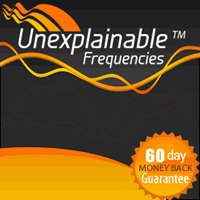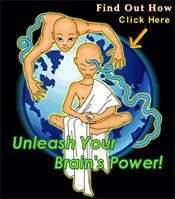Understanding Qigong and Tai Chi
![]() Konstantin Eriksen, Guest Writer
Konstantin Eriksen, Guest Writer
Waking Times
Tai chi qigong, and, in fact, all forms of chi kung (chi kung and qigong are the same thing), have deep roots in ancient Chinese philosophy. Their principles can be hard to understand for a lot of Westerners. In this article I’m going to give you a basic overview of the philosophy underlying the chi kung exercise system, in plain English.
Chi kung is “energy work.” Energy is everywhere, it penetrates the cosmos. No one really knows exactly what this energy is. An analysis of modern physics shows that in the end, all “particles” are actually the probability functions associated with an underlying energy, and that the true nature of that energy is unknown. So much for scientific “knowledge.”
For tai chi qigong purposes, energy is divided into the energy of non-living things, such as the sun or the oceans, and the energy of living things, biological organisms such as animals and plants.
In humans, the Chinese called the energy inside the human body chi or qi. Chi is the bio-electrical, magnetic field of the body, and it can be seen with various devices such as magnetic resonance imaging devices.
The concept of chi energy is not mystical, it is a fact of nature. Someone who practices chi kung exercises for long periods of time can increase the strength of that energy to make himself more healthy and free of disease.
The Chinese divide the energy of the human body into three different types – jing, chi and shen.
Jing means “essence” in Chinese and refers to the body’s own liquids, and especially the sexual fluids, saliva, hormones and other liquids of the body. Generally, anything that is produced by the body’s glands is considered to be jing.
Jing is directly related to sexual energy (sexual desire) and is one of the basic keys to generating more chi. Jing also comes from food so it is important to eat a healthy diet. Anything that can be reduced to matter or some type of substance is called jing energy.
Chi is, as I said above, the natural flow of bio-electricity through the body. The more jing you have, the more chi energy you can build. Chi can be generated and increased through proper training, as I describe below.
Shen is a Chinese word that is difficult to translate but it’s analogous to what we call consciousness orspirit. It is connected to the emotions.
The basic principle of chi kung, the internal martial arts and Chinese medicine is that the jing energy feeds the chi and that the chi in turn feeds the shen.
That is, the stronger your bio-electrical forcefield, the stronger you wil be mentally, emotionally and physically. As your mental intention gets stronger, your energy will get stronger. As your energy gets stronger, your body fluids would become more balanced for your age. As this happens, you create more bio-electricity and an even better mental and emotional state.
It’s a cycle.
If you get the cycle going in the right direction, by eating healthy, reducing stress and doing qigong exercises properly and consistently, you become healthier and stronger over time.
If the cycle goes in reverse, each component weakens the next one in the cycle. It becomes a vicious circle of decreased health, a weaker body and increased negative emotions.
For example, when you get down on yourself mentally, you have less energy. If you feel anxiety, your anxiety reduces your energy levels. Job stress and worrying also reduce energy levels. The less energy you have, the worse your biochemistry gets. And so on…
Many people notice these things in themselves, but they’re usually not aware of the underlying vicious circle caused by the disruption in the energy cycle described above.
So how can chi kung / qigong help us make positive changes in our lives?
Here are the main components of chi kug exercises:
The first thing to look at is the way you stand or sit during the exercises. When your body is aligned in the right way, as nature intended, you naturally calm down, use less muscle power to hold yourself up and you take the pressure off your and spine and joints.
The proper posture is standing with the spine straight and relaxed, as though you’re hanging from a string attached to the top of your head, with your spinal discs aligned like a stack of plates. Eventually I will upload videos to show how this is done. Please refer to my other chi kung articles for more information.
Breathing.
There are several different ways of breathing in qigong. Changing your breathing from the shallow chest-breathing most people use (and which is considered normal nowadays) to a proper tai chi type of breathing will help relax your mind calm your emotions, increase your oxygen levels and get your energy cycle pointed in the right direction.
You should breathe naturally from the belly, never from the lungs. Your breaths should be soft and deep at the same time. For a good lesson, look how a baby breathes, they breathe naturally.
Mind.
At first the mind is focused on the breathing. As you continue practicing, you begin to think less and less and the mind becomes more empty of thoughts. The less you think, the more energetic you feel as you continue breathing. Excessive thinking burns energy and wastes it.
Relaxing the muscles around the eyes and allowing your vision to get blurry can help with this. Your brain should feel like a sponge.
Movement.
Tai chi qigong movements are designed to be in harmony with the breath. They are also designed to strengthen the muscles, bones, connective tissue and tendons.
The ultimate goal of chi kung is to do the above things consistently, until you get into the habit of a positive energy cycle that, over time, makes you healthier, stronger, calmer, more clear-thinking, less anxious, etc…
I know it does. I’ve spent the last 3 years training almost every single day. The results have been spectacular. My stress decreased; my body got stronger; my blood tests are those of a male 15 years younger; my problems with tendinitis decreased over time until they became almost non-existent; my memory is way better. And so on.
I don’t want to bore you by listing every positive effect. Let’s just say that it’s the greatest and most successful commitment I’ve ever made and that it improved every aspect of my life.
Nothing had ever had such a positive impact on me in the past.
I want to leave you by making 3 more points:
1. This is something that takes discipline. If you want to get benefits, you have to commit.
2. You have to get a good teacher. Most teachers don’t teach the secrets to getting good. Many of them don’t even know them. Others are just there to make money.
3. Chi kung is not something you believe in. It is something you DO.
You do it, and, over time, the results start to show and they begin to grow and grow and grow.
About the Author
Konstantin Eriksen is a philosopher and a 32-year-old former stock-trader, long-time natural health researcher, neigong enthusiast and fledgling internet entrepreneur. In my spare time, I enjoy hiking, music, mountaineering, meeting interesting women, studying whatever interests me and Piazzolla. Please visit his excellent blog, Life-Sucks.
This article is offered under Creative Commons license. It’s okay to republish it anywhere as long as attribution bio is included and all links remain intact.
~~ Help Waking Times to raise the vibration by sharing this article with the buttons below…


